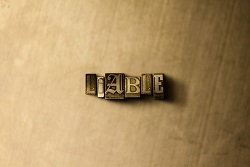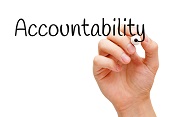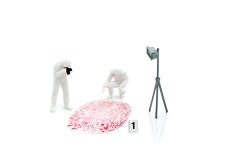Labeled Liable
Part II of II
“Surround yourself with assets, not liabilities.”
Introduction
Liability is a billion-dollar word. Legally, socially and morally, all actions are subject to and governed by a sense of moderation. A civil liability claim and the concept of abatement go hand in hand since a claim can only sustain its validity during a particular time frame.
While part one of this article touched on the essential aspects of both civil and criminal liability, exemptions to liability, and the fundamental pillars upon which a civil suit survives, this article goes further to describe the dynamic concept of abatement in civil suits and explicates with a brief case study.
Despite the fact that the term abatement comes from the French word for batter, abatement doesn’t usually hold a negative standing––while abatement reduces something, it doesn’t necessarily beat it to a pulp. In civil suits, the focal purpose of abatement is to save time and expenses of a trial in the case where the plaintiff’s suit cannot be attained in the original form in which it was presented.
 A
A rticle (111) of the Commercial Transactions Law[i] of UAE is responsible for governing the clause of abatement. It provides that in the case of a defect the purchaser shall notify the Vendor within fifteen days of the date on which the item sold is actually delivered to him, and he must file the action for rescission or reduction of the price within sixty days of such delivery date. However, if the defect is hidden and cannot be detected by a routine examination, the purchaser must then notify the vendor immediately when he discovers it, and lodge the action in warranty of the defect within six months of the date of actual delivery, unless there is an agreement to the contrary. Where the purchaser does not notify the vendor of the difference or defect, or if he does not file the action for rescission, price reduction or defect warranty within the period as the case may be, his action shall not be heard unless the purchaser proves vendor's cheating. Even so, the action shall not be heard if lodged after the lapse of one year of the delivery date.
rticle (111) of the Commercial Transactions Law[i] of UAE is responsible for governing the clause of abatement. It provides that in the case of a defect the purchaser shall notify the Vendor within fifteen days of the date on which the item sold is actually delivered to him, and he must file the action for rescission or reduction of the price within sixty days of such delivery date. However, if the defect is hidden and cannot be detected by a routine examination, the purchaser must then notify the vendor immediately when he discovers it, and lodge the action in warranty of the defect within six months of the date of actual delivery, unless there is an agreement to the contrary. Where the purchaser does not notify the vendor of the difference or defect, or if he does not file the action for rescission, price reduction or defect warranty within the period as the case may be, his action shall not be heard unless the purchaser proves vendor's cheating. Even so, the action shall not be heard if lodged after the lapse of one year of the delivery date.
Case Study
Moving further, the below-mentioned case study shall provide for an example of a civil liability claim between two parties in a commercial sale:
 The two companies (A) & (B) made a contract upon which (A) supplied (B) with cabling and steel pipes. Both parties mutually agreed on A demonstrating the way such cables and steel pipes are installed, and it would be B's role to install them under A's supervision. The cabling and pipes functioned for five years post-installation after which some faults occurred. Upon inspection of the equipment, it occurred that some damage or deterioration was found in the cables and steel piping. (B) assigned a specialist to inspect them. The latter submitted a report stating that the reason of the faults could be mal-installation, material defects or external factors; the expert did not resolve the cause of the damage. Thereafter, (B) notified (A) with a request to replace the defective goods. On signing the contract, both companies had agreed that the guarantee period shall be one year as of the date of installation and two years maximum as of the date of supplying.
The two companies (A) & (B) made a contract upon which (A) supplied (B) with cabling and steel pipes. Both parties mutually agreed on A demonstrating the way such cables and steel pipes are installed, and it would be B's role to install them under A's supervision. The cabling and pipes functioned for five years post-installation after which some faults occurred. Upon inspection of the equipment, it occurred that some damage or deterioration was found in the cables and steel piping. (B) assigned a specialist to inspect them. The latter submitted a report stating that the reason of the faults could be mal-installation, material defects or external factors; the expert did not resolve the cause of the damage. Thereafter, (B) notified (A) with a request to replace the defective goods. On signing the contract, both companies had agreed that the guarantee period shall be one year as of the date of installation and two years maximum as of the date of supplying.
The question arises: What is the legal position of (A), if (B) filed a liability claim against (A)? And what is company (B)’s legal status in respect of this liability claim? Let’s find out.
Evidentiary Support
The claim must be backed with evidence: all legislation, whether national legislation or comparative legislation, require the defendant to submit evidence. However, it is not sufficient that the plaintiff submits evidence upon its own findings. This means that such evidence must be reasonable and pursuant to law. It cannot be biased evidence that might be tampered with for a prejudicial reason. Judgments shall not be based on doubt but on facts. Article 1/1 of the UAE Federal Law of Evidence[ii] states that “Plaintiff shall prove his claim and the defendant shall deny thereof”.
We see that company (B) does not have conclusive evidence proving that the liability that occurred is due to the negligence of company (A)’s work since the expert did not zero in on a specific reason. Since their evidence is based on doubt, it is considered invalid and is not fit to prove the subject matter of its claim.
It is imperative to note that doubt is always interpreted to be in favor of the debtor. It is suspected, or a result thereof if any pre-conceived assumptions exist.
The aforementioned expertise report has to be considered valid, and for it to be so, it must be compatible with a putative report that is to be issued by a commissioner with the relevant jurisdiction.
The responsibility of Company A
The following three prospects are to be taken into consideration which renders the company (A) not responsible for the claim of the company (B):
- If the materials used to create the products are of poor or inferior quality or manufactured by a foreign cause, it precludes company (A)’s the responsibility of the faulty products.
- The focal point of the signed agreement is that company (A) is only responsible for explaining how the product must be installed by the company (B) and supervising their attempted installation. Nowhere does it state that company (A) installs the product themselves. Their company only owes education and oversight. As we notice, the company (B) did not allege that company (A) failed in their obligation to provide the appropriate scientific curricula, because they didn’t. They followed their contract to the ‘T’ and performed their contractual obligation. In this case, the trainee failed to fulfill and receive the scientific curricula; hence, it is not the trainer’s responsibility if the commodity is damaged.
- The expert’s report cited ‘external factors’ as a probable cause for damage of products, which would remove responsibility from company (A)’s shoulders.
- With regard to the agreed warranty between Company (A) and Company (B), the two companies had agreed that the company (A) would ensure the safety of the goods for one year from the date of installation, with a maximum warranty of up to two years from the date of installation. Since it has been five years, and this period has been extended, it is not permissible for the company (B) to ask for any damages caused to the goods.
Conclusion
Typically, product liability claims are based on state laws and brought under the theories of negligence, strict liability or breach of warranty. A set of commercial statutes in every country will contain warranty rules affecting product liability. As we notice from the aforementioned case study, liability claims are complex and subjective to each case. The signed agreement between both parties in the case study protected company (A) from a liability claim that they weren’t responsible for due to previously stipulated warranty agreements. Care should be taken as regards to the laws of each country regarding liability claims and the contracts that parties have willingly agreed to so as to ensure premium protection.
[i] Federal Law No. 18 of 1993
[ii] Federal Law No. 10 of 1992
 English
English
 عربي
عربي Русский
Русский 官话
官话 português
português
 Türk
Türk 


























